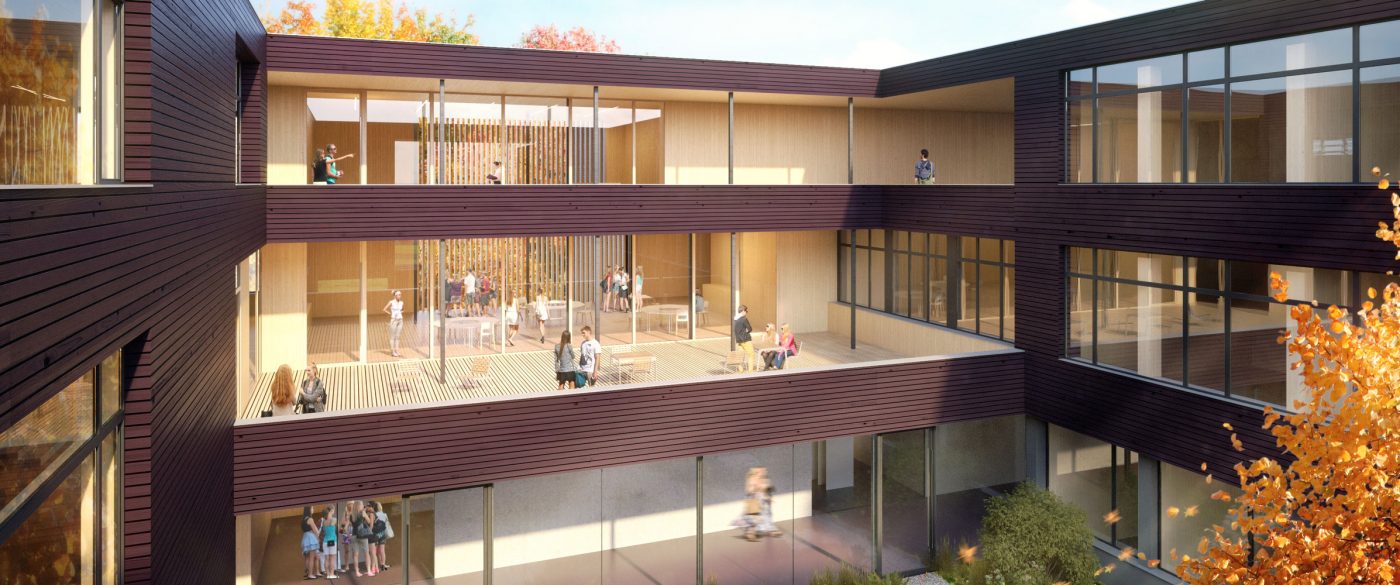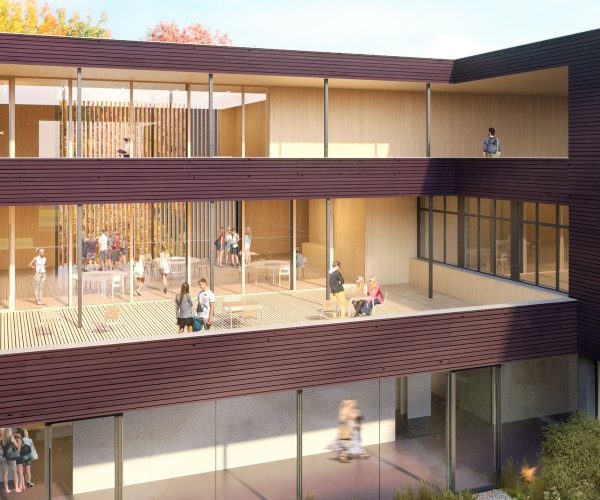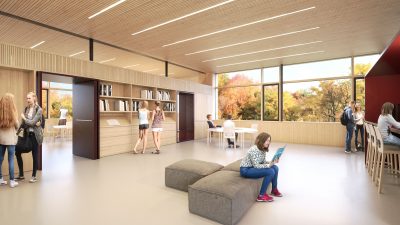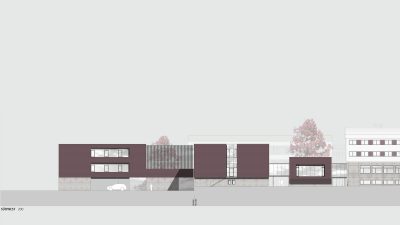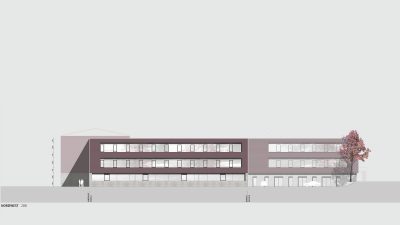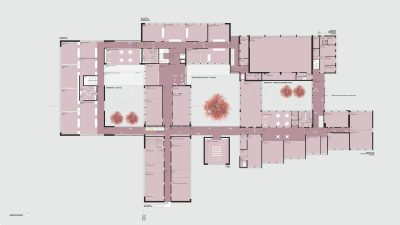Project Information
Querformat Architektur ZT GmbH, Dornbirn
DI Thomas Fußenegger
Client
Land Vorarlberg
Location
Hohenems (A)
Competition
2016
Projektphasen
Competition
Execution
Rights
Text Hermann Kaufmann + Partner ZT GmbH,
Translation Bronwen Rolls, Thomas Knapp
- Koller & Partner GmbH, Bregenz
- Electronics Planning
ek-plan I Elektroplanung, Nenzing
gbd ZT GmbH, Dornbirn- Geotechnical Engineering
BGG Consulte, Hohenems - Building Physics
SPEKTRUM - Zentrum für Umwelttechnik & -Management GmbH, Dornbirn
WASSERPLAN - Fischer & Herda Ziviltechniker GmbH, Hohenems
BSBZ – Landwirtschaftsschulen Vorarlberg, Hohenems
1. Platz
The rural education and training centre has been expanded over the past decades. With the extension in 2006, an attempt has already been made to bring the dissected structure into a clearer form. The existing structure of the building is relatively compact and clearly separates itself from the extensive outdoor space, and the adjacent settlement area. Only the two entrances for the school, and the adult education centre break, the closed design. These vacant lots mark the entrances, which subsequently lead to two courtyards. The entrance yard of the school, with adjoining multi-purpose hall, marks the actual centre of the complex.
If one tries to attribute the existing building, together with the surrounding open spaces for agriculture and sport, to an urban type, this can best be described as a rural farm typology with school use. The large volume stands confidently in the green space and embodies a clear attitude towards the site and its environment. The farm typology can also be extended again and again, at the same time enabling a high spatial quality at the interface between interior and exterior spaces.
The present draft attempts to pick up and further strengthen this urban planning and spatial potential.
By setting up the new building, another courtyard is being built, which is located in the centre of the three school houses, and forms the centre of the school district. This schoolyard remains spatially closed to the outside and generates no further access points; it remains the entrance for a school. The new building is also based on the internal development structure of the existing building and is positioned in direct extension of the main corridors. The resulting projections and recesses of the structure divide the large volume relative to the environment. The new building will also clean up problematic facade elements of the northwest facade.
Although the school building is accessible via the common entrance, the traffic flows are shared immediately thereafter. Going straight on from the entrance, the path leads directly past the central cloakroom and past the courtyard, to the main staircase. Similar to the existing building, the staircase connects the processing and workshop areas in the basement with the overlying learning landscapes. From the central stairwell one arrives directly in the symmetrically arranged common areas. This valuable teaching zone was also planned for this area.
The new teaching area will be integrated directly into the existing structure via the two development additions. This double route allows for ease of access to all class sections, while at the same time allowing for a second escape route without an additional staircase.
The dining and common room, which is open to all students, is also located along this access door, in the centre of the school. These common areas are preceded by terraces and balconies, which also serve as constructive sun and weather protection to the southwest. The integration and extension of the existing terrace into the courtyard also opens up further possibilities for school operation. On the one hand as a possible platform for the envisaged outdoor classes, on the other hand as a necessary space for social exchange in the breaks. In the courtyard, a lively atmosphere can develop, which is enriched by a natural garden in the basement.
In order to ensure accessibility for the entire school building, an additional lift will be installed on the ground floor of the existing building.
Due to multiple extensions and changes to all the various buildings of the school, a cohesive facade design language was sort after. This would then create a sense of a quality learning environemnt, while also demonstrating an expression of the functional logic, and the high demands on ecology and sustainability. While the massive basement storey predominantly accommodates workrooms with higher fire protection requirements, the classroom floors are again designed in solid timber with a stacked board construction. However, the load-bearing central axis will be trimmed in the new building, with ceiling-level girders and steel columns in order to make the learning landscapes as open and flexible as possible. Additional acoustic measures are provided via the walls and furniture.
While the facade colour expresses the school to the outside, the three classrooms inside are deliberately differentiated in colour and independent from each other. In addition to the natural timber surfaces the inside will have bright flooring with coloured accents provided by the furniture. The facade paint on the timber slats has been proven over the past ten years as a direct comparison with a renovated plaster surface.
A new design element on the facade is the areas with vertical slats. Through this filter, both the inner development and community zones in the outer areas can be recognised, as well as the transition areas between the different stages of construction.
The classrooms and the adjacent common area are only zoned by furniture installations. Through the continuous skylights, the rooms look open, bright and spacious. Open doors can be hidden in the deep furniture, and glazed seating niches also promote transparency and communication, while at the same time guaranteeing sound insulation. Functional requirements such as sinks, storage space or even working bunkers are all integrated into the furniture, leaving enough room for flexible furniture and creative uses.

